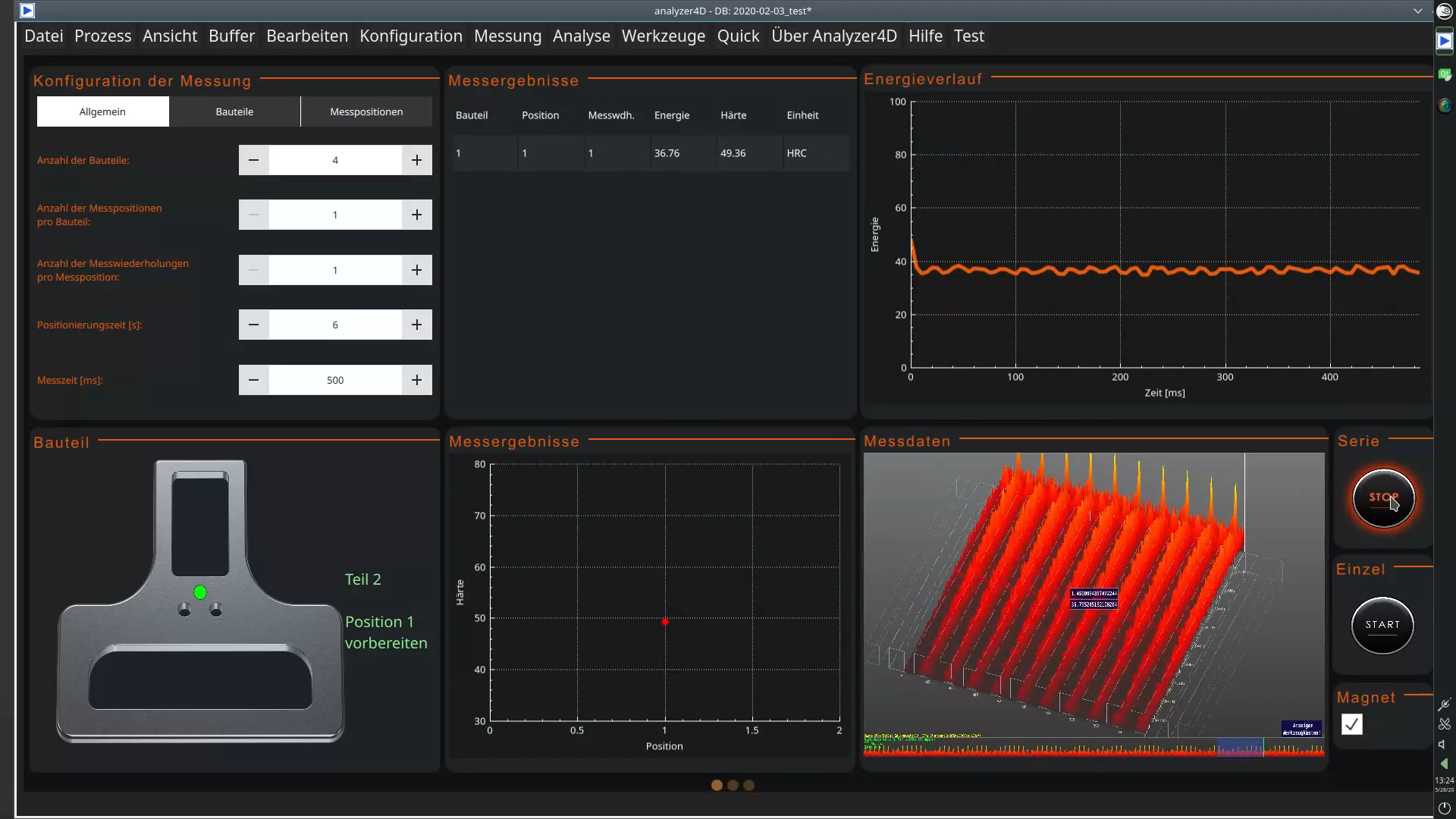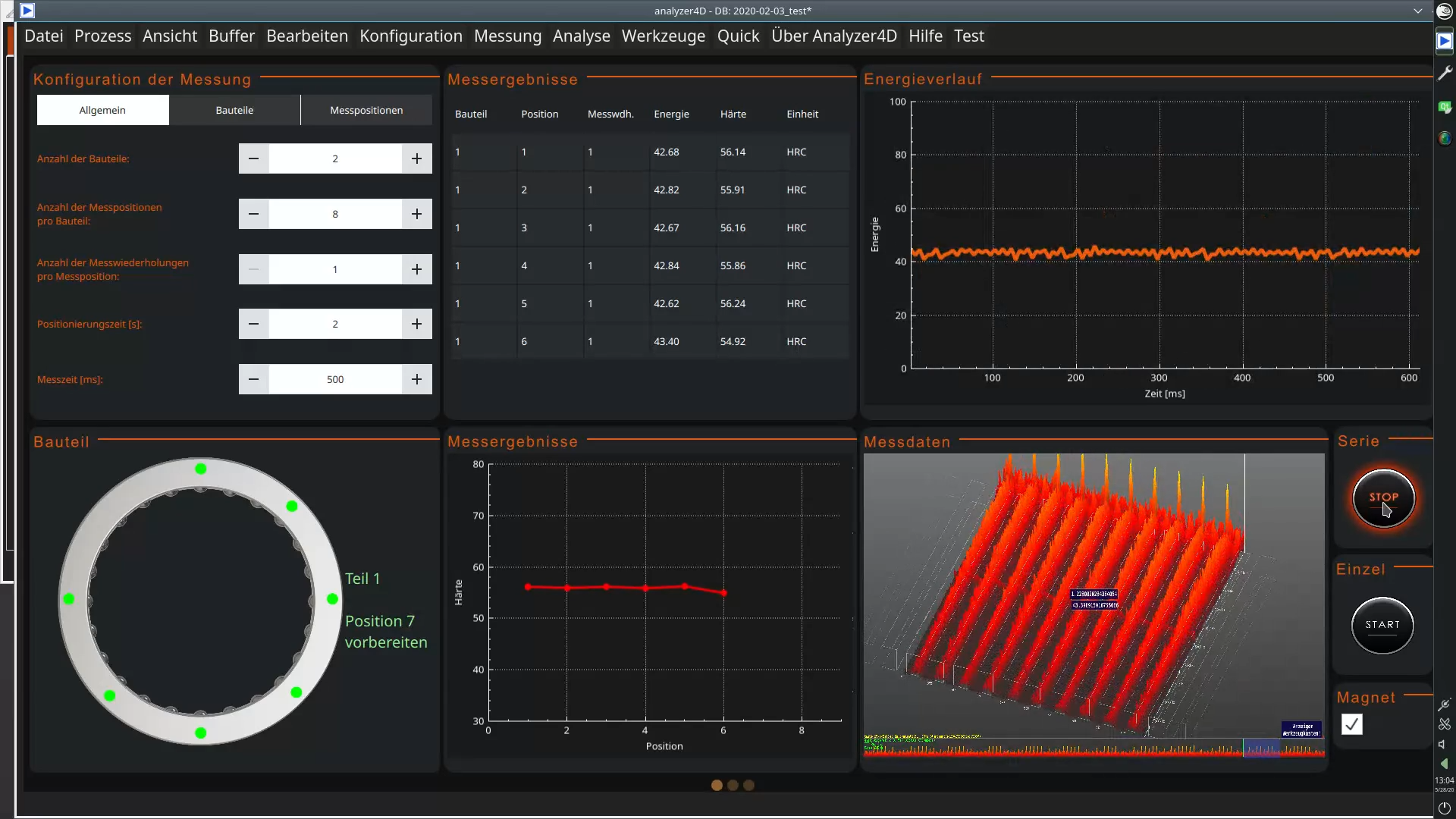QASS Optimizer4D and µmagnetic
Your Customizable Measurement System
Since 2001, QASS manufactures measuring systems and structure-borne sound sensors. At QASS, we continuously broaden our expertise in data analysis, quality assurance, and process monitoring in order to redefine the state of the art. Our approach of combining high-performance hardware and adaptive software is unique, as it allows for a wide range of solutions. By launching the magnetic-inductive measuring methods in 2016, QASS has taken a further step in the expansion of its sensor portfolio.
The magnetic-inductive effect of Barkhausen noise can be used for various tasks in non-destructive material testing such as
- Hardness testing for hardness differences and hardness curves,
- Grinding burn detection,
- Detection of heat treatment errors, or
- For sintered metals, checking for density anomalies.
µmagnetic measurements are performed non-destructively and are normally carried without contact. A ferromagnetic material is magnetized by an alternating magnetic field and interacts with it. Based on the material composition, heat treatment condition, and manufacturing process, characteristic signals are produced. QASS measuring systems can also be used in industrial environments and are not limited to laboratory applications. This is made possible by the proven QASS methods of spectral analysis and electronic filtering which improve the signal-to-noise ratio. Measured values are reproducible. The system is robust and convinces by its reliability. Aspects such as complete control over the magnetic excitation and integration into processes through collaborative robots complete the measurement concept in terms of active measurement. All measurement results are written into a database and can be exported e.g. as a csv-file or as a pdf-document. Hardness can be indicated in Rockwell, Vickers, or Brinell.
Data evaluation is carried out on two levels. The first level comprises the data analysis which is run in the background. The data generated by the spectral analysis is analyzed through the QASS operator network. The operator network consists of small programs (operators) that are linked together according to data flow models to form analysis chains. The operators include the possibility for scripting. Through scripting different functions of the measuring system can be combined to change measurement and analysis to fit your requirements, when changes to the measurement programming are necessary, or to improve data evaluation. The measuring system is not limited to the analysis of QASS sensors. Thanks to the versatile interface concept, other sensors and data streams can easily be integrated and data from different sources can be combined.


Preview of the new graphical user interface for hardness measurements. The interface combines measurement configuration and result presentation and makes it easier for the user to carry out hardness tests. Hardness measurements can be parameterized and started via the interface. Through the component model it is visualized which measurement position is to be used next. Furthermore, the user is guided through the process of measurement. The measurement results (Barkhausen energy and hardness values) are clearly plotted and listed in a table.
The second level of data evaluation centers on the visualization of the data. With this, easier access to the data analysis level is achieved and understanding of complex measurement tasks is facilitated. Its key feature is a graphical user interface (GUI) that is fully adaptable to the users’ requirements, including the displayed elements. You can integrate your own corporate design into the GUIs of QASS measurement technology or you can use tables, diagrams, and display elements such as components models or motion graphics of machines as you like.
Design your own measuring system, do not just use any system.